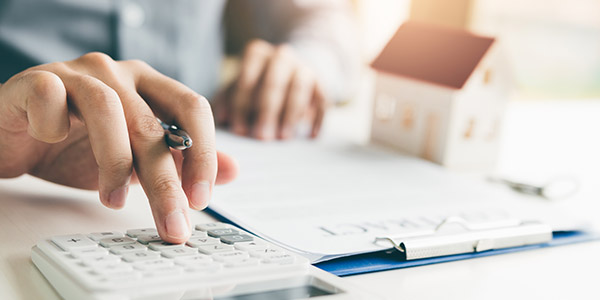Homeowners
How to Get Rid of Private Mortgage Insurance
July 5, 2023
As you begin searching for your dream home and figuring out how mortgages work, you'll run into a lot of terminology around mortgage insurance. Several different types of mortgage insurance are each tied to various loan products. For instance, borrowers who use FHA loans (backed by the Federal Housing Administration) must pay a mortgage insurance premium (MIP). There are also ways to eliminate MIP as well.
Conventional loans, the most common home loans, require private mortgage insurance (PMI).
What Is PMI?
PMI is private mortgage insurance that your lender requires on Conventional loans – most often, it's needed when a borrower puts down less than 20% as a down payment on their new home. PMI was created after the Great Depression as an alternative to Federal Government insurance, the only available type.
An example of a federally insured loan is an FHA loan. FHA loans are backed by the Federal Housing Administration. This means that should a borrower defaults on their loan, the FHA will pay the lender the remaining unpaid principal balance.
Conventional loans do not have government backing and instead follow guidelines set by Fannie Mae, Freddie Mac, or other private entities. Fannie Mae and Freddie Mac are publicly traded companies established by the federal government to expand the mortgage market. Because Conventional loans are not government-insured, they require private mortgage insurance (PMI).
Things That Affect PMI
How much you will pay in PMI is directly related to how much money you can put down, your credit score, and your loan-to-value ratio (LTV).
Down Payment Amount: Your down payment is the initial amount of money you put down on the house. Each loan type has a different down payment requirement with various conditions. For Conventional loans, the down payment requirement is between 3%-20% depending on your credit score and other factors. If you can pay 20% upfront, you will usually not have to pay PMI on the loan.
Credit Score: Your creditworthiness is a significant factor in which loans you can qualify for, as well as the terms and conditions of that loan. Conventional loans often require a minimum credit score of 620 to qualify. Improving your credit score can affect the terms of your loan, including how much PMI you will pay. With a higher credit score, you might pay less PMI.
LTV: LTV is a "lending risk assessment ratio" that is used by a lender to determine how much risk they believe will be involved in lending to a particular borrower. It describes the monetary amount of the home loan you are borrowing as a percentage of the home's value. The more money you can put down on the home you want to purchase, the lower your LTV will be. This, in turn, will lower your PMI.
When Does PMI Go Away?
Once you have PMI on your loan, getting rid of it will depend on your equity. Your equity is the difference between the value of your home and the amount of money you still owe. As you pay down your loan, your equity increases.
Once your equity reaches 22% of the original value of the home, your PMI will automatically end. This automatic cancellation is the result of the Homeowners Protection Act of 1998. The act was created to address the difficulties homeowners were experiencing when trying to cancel their PMI. It sets the standard based on the general acceptance of 80% LTV as sufficient evidence that the homeowner is committed to continuing to make timely and consistent mortgage payments. Once you have reached 22% equity in your home, your LTV will be 78%.
9 Ways to Remove Private Mortgage Insurance
1. Refinance your mortgage: Refinancing a mortgage is a common practice and a Loan Officer can help you make the transition. When you refinance a mortgage, you replace your current loan with a new one. This lets you choose new loan terms, like the type of interest rate, the amount, and the term length for repayment.
One of the main advantages of refinancing a mortgage is that, in some cases, it can allow you to get rid of your PMI. If you owe less than 80% of what your home is worth, or if it has increased in value since you took out your initial loan, you might be able to use refinancing to eliminate your PMI payments.
2. Automatic termination of PMI: As mandated by federal law, PMI will be automatically terminated for 1-unit primary and secondary homes when your loan balance is scheduled to reach 78% of the home's original value. If you have an investment property or a 2-4 unit home, please contact us at CustomerCare@nafinc.com or +1 (800) 893-5304 to determine when your PMI will be automatically terminated. Please note that if an escrow account is required for your loan type, you may not be able to cancel PMI manually.
3. Request PMI cancellation: To cancel before the termination date, you must comply with federal requirements and submit payment to the New American Funding Servicing department for an appraisal or other valuation required by your loan investor to confirm that the home's value has not decreased. Valuations ordered for a refinance or by a 3rd party will not be accepted.
4. Pay down your mortgage: The faster you can pay down your mortgage, the faster you will reach 20% equity in your home and be able to request PMI cancellation. Putting any extra money into your monthly payments can reduce the balance and decrease the interest you pay over the life of the loan.
Anytime you get extra finances like tax returns or money from a side hustle, consider putting it towards your mortgage.
5. Order a new appraisal: Another way you may be able to get rid of PMI is if your home's value has increased over the time you've been repaying the loan. To determine if your home value has changed, you'll need to order a new appraisal.
Appraisals can cost anywhere from $300-700 depending on factors like size and the condition of the property.
6. Prepay your mortgage: Prepaying your mortgage is the process of adding extra money to pay down the principal of your loan. This could reduce the interest you pay and allow you to increase the equity you have in your home more quickly. The faster you can build equity in your home, the faster you can cancel PMI.
You can prepay your mortgage in several ways. You can make extra monthly payments or biweekly payments, or if you get a surprise lump sum of money you can put that down as a one-time payment. You can also plan to make an additional annual payment. Prepaying your mortgage allows you to gain equity in your home more quickly, which will let you cancel PMI when you reach 20%-22%.
7. Home improvements: Since PMI is directly related to how much equity you have in your home, doing things that may increase the value of your home could help you build equity faster, which allows you to cancel PMI faster.
Adding improvements to your home can be as simple as upgrading your appliances or as detailed as renovating your entire kitchen. Examples of common home improvements include:
- Repainting
- Energy-efficient upgrades
- Renovating for accessibility
- Adding or replacing insulation, weather stripping, or other upgrades to increase durability
- Upgrading appliances like your washer, dryer, or stove
- New garage door
- New windows
- Landscaping
- Upgrading your bathrooms
- Creating a home office space
8. Remodel to add square footage: Remodeling your home can be expensive, so it may not be a good idea to do it to cancel your PMI. But it is certainly something to keep in mind if you are interested in remodeling.
Square footage is one of the main factors that is used by appraisers to decide the value of your home. When you begin the process of remodeling your home, you'll want to consider the cost of the remodel vs. the increase in value of the home. Some remodels and renovations will likely have a more beneficial cost-to-value ratio than others, so researching your options can be helpful.
The benefits of different remodels and additions can vary based on your location and the current market conditions. Some examples of home remodel additions include:
- Adding a bedroom
- Adding a wooden deck
- Adding an in-ground pool
- Extending a room
Remodeling your home may add value to the property, which could increase the equity you have in your home. If you remodel then get your property reappraised and discover that you've reached 20%-22% equity, you might be able to have your PMI canceled.
It is important to note that there is such a thing as "over-improving" your home, so be mindful of the factors involved.
9. Track your property value: Since PMI depends on equity and equity depends on the value of the property, when the value of your property is affected, your equity and PMI may be too. If your property value increases, the amount of equity you have built in your home could increase as well. If it has increased to 20%-22% then you might be able to cancel your PMI.
Factors that affect your property value include:
- The housing market: The conditions of the housing market affect the value of your home. These conditions include supply and demand, shifts in local laws, real estate trends, and socioeconomic shifts.
- Location: The location of your property has a significant impact on its value. Its proximity to things like schools or other businesses could offer sought-after options for jobs and education. What neighborhood the property is in will also affect its market value and proximity to highway access and public transportation.
- Size: The amount of livable space and the size of the lot will affect the value of your home. This includes how many bedrooms and bathrooms the home has, and how many rooms, and spaces like a deck or basement.
- Condition: A well-maintained home that is in good condition and requires few repairs will have a higher value on the market than one that will require more maintenance. Age factors into this as well. A new home with modern amenities that won't require as much upkeep will have a higher value.
These are not the only factors that will influence your home's value. Keeping track of environmental factors like new developments in your area and law and economic changes could allow you to take advantage of shifts in the market.
PMI Rights Under Federal Law
The Homeowners Protection Act was created to set guidelines and standards for borrowers who were having trouble canceling their PMI. It provides the benchmarks for the equity, LTV, and PMI relationship and protects borrowers against unnecessary and unrestricted charges. Under this law, lenders are required to give you a way to cancel PMI once you've reached a certain benchmark.
FAQs
How Much Does PMI Cost?
How much PMI will cost depends on factors like how much money you put down for your down payment, your credit score, and your LTV. As well as the value of the home itself.
When Does PMI Go Away?
PMI will automatically be removed once your loan balance reaches 78% of the original amount, provided you are current on your loan payments.
How Can You Avoid PMI?
In most cases, you can avoid PMI by paying a 20% down payment on your home. You can always ask your lender what their PMI thresholds are.
Can PMI Be Removed if My Home's Value Increases?
An increase in your home's value doesn't automatically qualify you to cancel your PMI. However, it can increase your equity, and if your equity reaches 20%-22%, you may be able to remove PMI, depending on your loan type.






 Smart Moves Start Here.
Smart Moves Start Here.